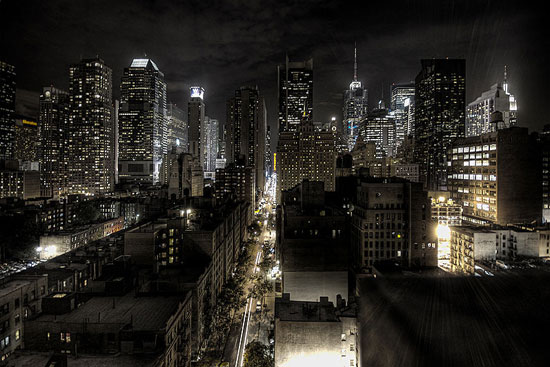Table of Contents
In image processing, computer graphics, and photography, high dynamic range imaging (HDRI or just HDR) is a set of techniques that allow a greater dynamic range of luminance between the lightest and darkest areas of an image than current standard digital imaging techniques or photographic methods.
This wide dynamic range allows HDR images to more accurately represent the range of intensity levels found in real scenes, ranging from direct sunlight to faint starlight.
The two main sources of HDR imagery are computer renderings and merging of multiple photographs, the latter of which in turn are individually referred to as low-dynamic-range (LDR) or standard-dynamic-range (SDR) photographs.
Tone-mapping techniques, which reduce overall contrast to facilitate display of HDR images on devices with lower dynamic range, can be applied to produce images with preserved or exaggerated local contrast for artistic effect.
Photography
In photography, dynamic range is measured in EV differences (known as stops) between the brightest and darkest parts of the image that show detail. An increase of one EV or one stop is a doubling of the amount of light.
High-dynamic-range photographs are generally achieved by capturing multiple standard photographs, often using exposure bracketing, and then merging them into an HDR image. Digital photographs are often encoded in a camera’s raw image format, because 8 bit JPEG encoding doesn’t offer enough values to allow fine transitions (and also introduces undesirable effects due to the lossy compression).
Any camera that allows manual over- or under-exposure of a photo can be used to create HDR images.
Some cameras have an auto exposure bracketing (AEB) feature with a far greater dynamic range than others, from the 3 EV of the Canon EOS 40D, to the 18 EV of the Canon EOS-1D Mark II.As the popularity of this imaging technique grows, several camera manufactures are now offering built in HDR features. For example, the Pentax K-7 DSLR has an HDR mode which captures an HDR image and then outputs (only) a tone-mapped JPEG file. The Canon PowerShot G12 and Canon PowerShot S95 offer similar features in a smaller format.
Editing
Of all imaging tasks, editing is the one that demands the highest dynamic range. Editing operations need high precision to avoid aliasing artifacts such as banding and jaggies. Photoshop users are familiar with the issues of low dynamic range today. With 8 bit channels, if you brighten an image, information is lost irretrievably: darkening the image after brightening does not restore the original appearance. Instead, all of the highlights appear flat and washed out. One must work in a carefully planned work-flow to avoid this problem.
History
The use of high-dynamic-range imaging (HDRI) in computer graphics was introduced by Greg Ward in 1985 with his open-source Radiance rendering and lighting simulation software which created the first file format to retain a high-dynamic-range image. HDRI languished for more than a decade, held back by limited computing power, storage, and capture methods. Not until recently has the technology to put HDRI into practical use been developed.
In 1990, Nakame, et al., presented a lighting model for driving simulators that highlighted the need for high-dynamic-range processing in realistic simulations.
In 1995, Greg Spencer presented Physically-based glare effects for digital images at SIGGRAPH, providing a quantitative model for flare and blooming in the human eye.
In 1997 Paul Debevec presented Recovering high dynamic range radiance maps from photographsat SIGGRAPH and the following year presented Rendering synthetic objects into real scenes. These two papers laid the framework for creating HDR light probes of a location and then using this probe to light a rendered scene.
HDRI and HDRL (high-dynamic-range image-based lighting) have, ever since, been used in many situations in 3D scenes in which inserting a 3D object into a real environment requires the lightprobe data to provide realistic lighting solutions.
Advantages
One of the primary advantages of HDR rendering is that details in a scene with a large contrast ratio are preserved. Without HDR, areas that are too dark are clipped to black and areas that are too bright are clipped to white. These are represented by the hardware as a floating point value of 0.0 and 1.0 for pure black and pure white, respectively.
Another aspect of HDR rendering is the addition of perceptual cues which increase apparent brightness. HDR rendering also affects how light is preserved in optical phenomena such as reflections and refractions, as well as transparent materials such as glass. In LDR rendering, very bright light sources in a scene (such as the sun) are capped at 1.0. When this light is reflected the result must then be less than or equal to 1.0. However, in HDR rendering, very bright light sources can exceed the 1.0 brightness to simulate their actual values. This allows reflections off surfaces to maintain realistic brightness for bright light sources.

UI/UX Consultant, Photoshop, XD, SketchApp, Product Designer, Website Designer, Mobile App Designer, Expert WordPress Developer. For web/mobile design and wordpress development related projects please contact me at dibakar@themepurpose.com







